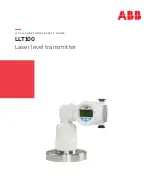
Page 5
For technical questions, please call 1-800-444-3353.
SKU 92801
Operating Instructions
Read the ENTIRE IMPORTANT
SAFETY INFORMATION section at the
beginning of this manual including
all text under subheadings therein
before set up or use of this product.
Initial Leveling
1. When the Laser Level is properly positioned,
activate the Laser by turning the Power /
Rotation Control Switch (11A), clockwise.
Then recheck the Level Vials (9A) to make sure
the Laser Level has not been bumped or moved.
2. The rotation speed of the Laser Head Cover (6A)
can be set by adjusting the Rotation Control Switch.
Turn
clockwise
to make the beam rotate faster.
Turn
counterclockwise
to slow the beam down.
3. Mark the desired measurement(s).
Then turn off the Laser Level by turning the Rotation
Control Switch counterclockwise all the way.
Equalizing Height Of
Distant Objects
1. For example, if you wish to install cement
footings for a storage shed, first determine the
desired height of any one of the footings.
2. Align the laser beam with the top surface of the
reference footing, and check to make sure the
Vial Levels (9A) are level with the ground.
3. Direct laser beam toward each of remaining
footing locations. On reference stakes at those
locations, mark the spot the Laser illuminates.
This indicates desired top surface of that footing.
4. This technique can be used for many similar
applications, i.e., to align pictures on a wall.
Installing Horizontal Or
Vertical Objects
1. For example, to install a chair rail on an interior
wall, first mark the desired height of the rail.
2. Align the Laser Level with that point, and check to
make sure the Vial Levels (9A) are level with the floor.
3. Shine laser beam on the adjoining wall, and
have an assistant mark that location.
4. Then, install the chair rail in a direct
line between the two points.
5. This technique can be used to install
vertical or 45 degree angle objects.
Checking a Slope
1. For example, to determine the slope of
a floor, place the Laser Level at one end
of the floor, using the Tripod (3).
2. Check to make sure the Vial Levels (9A) are level.
3. Measure the vertical drop from the
Laser Lens to the floor surface.
4. Shine the laser beam on a ruler held vertical at
the other end of the floor. The difference in these
measurements is the amount of slope in the floor.
5. This technique can be used to design slope,
such as when constructing an outdoor
surface which will require a runoff slope.



















